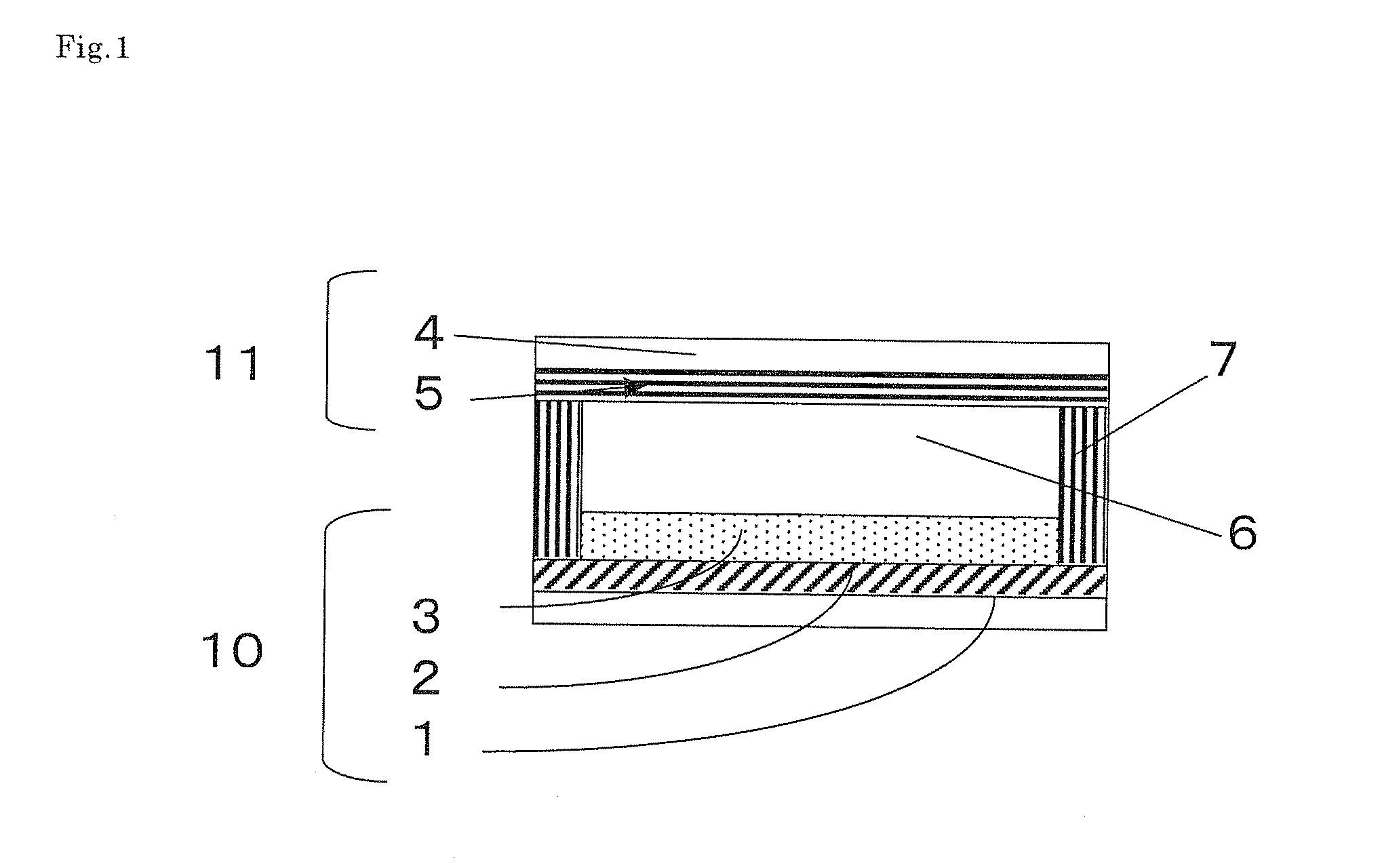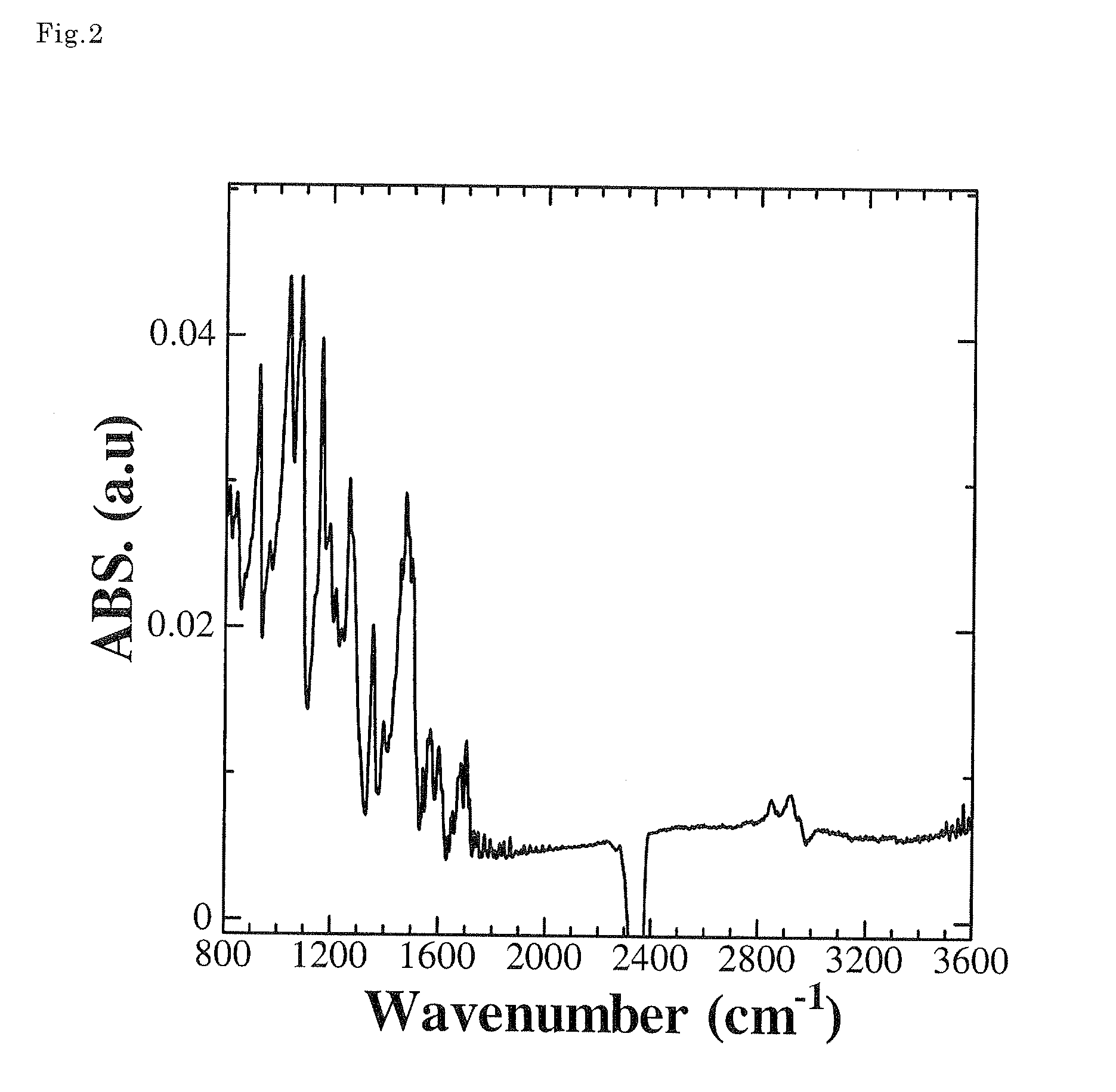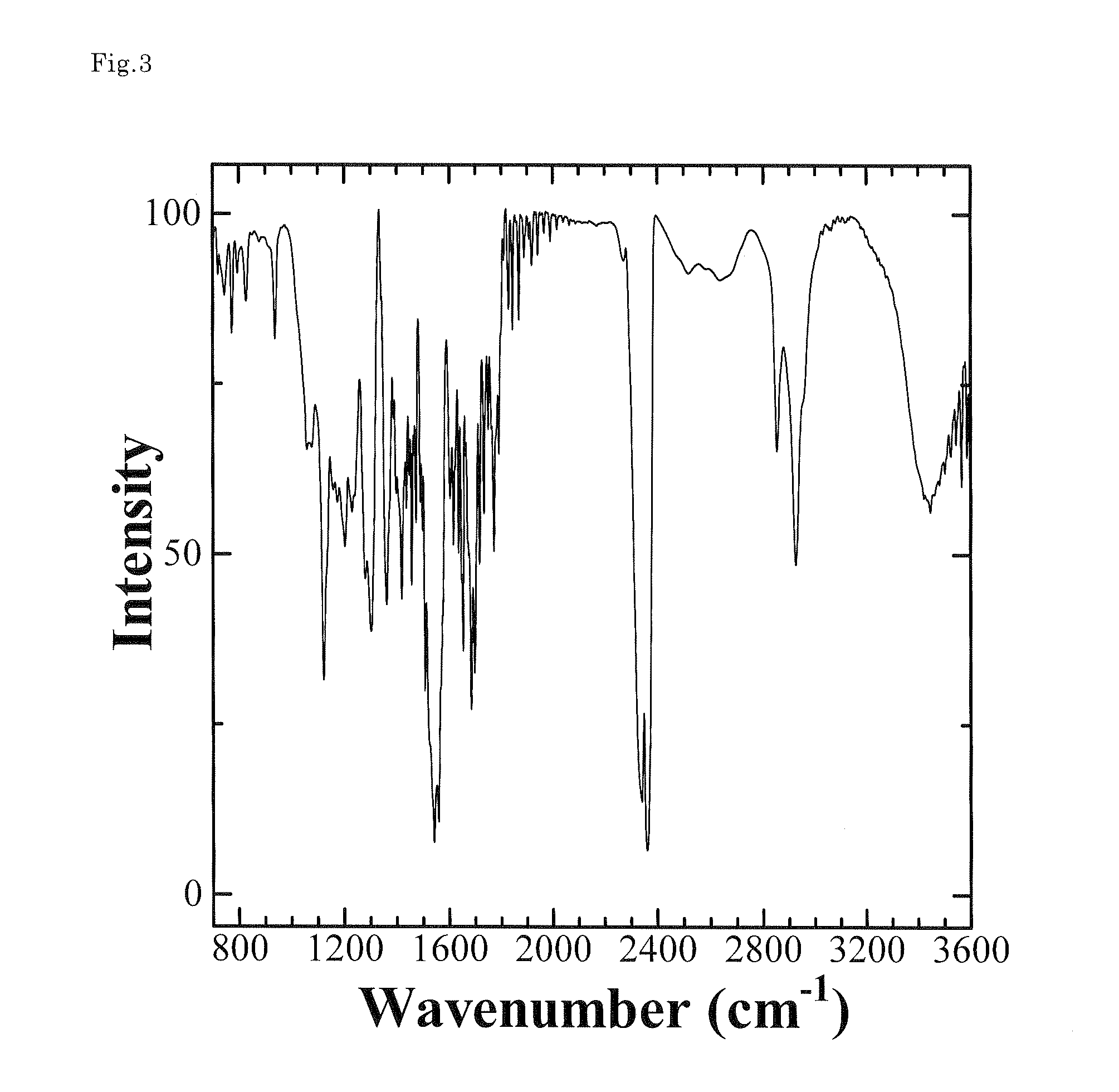Dye-sensitized solar cell, photoelectric conversion element, and dye for use in the solar cell and the element
a solar cell and dye technology, applied in the direction of metal/polymethine dyes, electrolytic capacitors, organic chemistry, etc., can solve the problems of dye energy transfer and loss of activity, and achieve the effect of easy association and easy energy transfer
- Summary
- Abstract
- Description
- Claims
- Application Information
AI Technical Summary
Benefits of technology
Problems solved by technology
Method used
Image
Examples
synthesis example 1
[0060]Carboxyindolenine was synthesized using 4-hydrazinobenzoic acid and methyl isopropyl ketone. 78.87 mmol of 4-hydrazinobenzoic acid, 160.92 mmol of sodium acetate, and 123.46 mmol of methyl isopropyl ketone were added to 180 ml of glacial acetic acid, and the mixture was subjected to a reaction under nitrogen at 120° C. for 7 hours. Acetic acid was distilled off and the resultant solid was dispersed in a solution of water:methanol=9:1 and filtered. The solid was added to 70 g of methanol and the mixture was heated to 30° C. and filtered. 160 g of water were added to the filtrate for crystallization and the crystal was filtrated. The resultant solid was washed with 35 ml of a solution of water:methanol=9:1 and dried in vacuum to afford 37.7 mmol of carboxyindolenine.
[0061]In order to synthesize an N-n-alkylcarboxyindolenine salt, 0.1 mol of 2,3,3-trimethyl-5-carboxy-indolenine and 1-iodooctane were dissolved in 20 ml of ethanol and the mixture was subjected to a reaction for 7 h...
synthesis examples 2 and 3
[0063]Squarylium dyes D-5 and D-6 were obtained in the same manner as in Synthesis Example 1 except that 1-iodododecane or 1-iodooctadecane was used instead of 1-iodooctane in the synthesis of the carboxyindolenine salt.
synthesis example 4
[0064]A squarylium dye D-1 was synthesized in the same manner as in Synthesis Example 1 except that carboxyindolenine was used as the carboxyindolenine salt.
PUM
 Login to View More
Login to View More Abstract
Description
Claims
Application Information
 Login to View More
Login to View More - R&D
- Intellectual Property
- Life Sciences
- Materials
- Tech Scout
- Unparalleled Data Quality
- Higher Quality Content
- 60% Fewer Hallucinations
Browse by: Latest US Patents, China's latest patents, Technical Efficacy Thesaurus, Application Domain, Technology Topic, Popular Technical Reports.
© 2025 PatSnap. All rights reserved.Legal|Privacy policy|Modern Slavery Act Transparency Statement|Sitemap|About US| Contact US: help@patsnap.com



